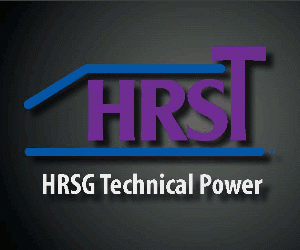A quick search of the CCJ’s editorial archives [link] shows how much arc-flash safety is on the minds of owner/operators, especially in the best practices category. Whether you have a formal arc-flash safety program or not at your facility, there’s still much to be gained by listening to Aaron Neuvert’s presentation on this important topic at the Combined Cycle Users Group’s 2021 virtual conference, available on the Power Users website. [link]
His company has incorporated the relevant OSHA, National Fire Protection Association (NFPA), IEEE, and state standards to create its own program which “summarizes and simplifies [these standards] for practical application.” The presenter’s commentary substantially expands on the content of the slides.
Arc flashes are low-frequency, high-impact events but their occurrence is increasing industry-wide. About 2.5% of arc-flash incidents result in the death of a worker; 95% are caused by human error, so training and strictly adhering to, and updating, best practices are critical. Clear and proper labeling is vital, as is the use of the proper personnel protective equipment (PPE), both areas of the standards which have been updated recently.
A few main points:
-
- An open-air arc in a switchyard or a powerline may be more dramatic, but arch flashes in a contained space (arc in a box) are much more dangerous because the energy has only one path—towards the opening.
- Stay away from ground cables and ask the question, “Can a ground cable withstand the faults the manufacturer claims it can?”
- New best practices are coming into play, based on recalculation of so-called minimum approach distances (MAD).
- When modeling for boundary protection, test for equipment voltage, rather than rely on rated design data from the supplier.
- The arc-flash boundary becomes effective only when hazardous tasks (table) are being performed on or around the equipment.
- Always wear flame-resistant clothing when working around equipment prone to arc flash.
An audience member asked for thoughts on arc flash for dc equipment. The speaker responded that they are only starting to test dc systems; not enough is known about them yet, but he expects updates to industry practices within the next five years.
Long term, Neuvert projected, the solution is to become a “remote-racking” organization and use robotic devices which “take the employee out of the hazardous area.”
[TABLE]
Tasks for which the arc-flash boundary becomes engaged
-
- Any activity that increases the chance of a fault condition.
- Anytime the MAD is breached by a body part or uninsulated tool.
- Working on energized electrical conductors and circuit parts.
- Performing voltage testing.
- Racking potential transformer (PT) trays.
- Installing or removing protective grounds.
- Racking breakers into or out of energized compartments while within the arc-flash boundary.
- Installing or removing temporary barriers that are in direct contact with exposed live parts.
- Installing or removing bolted covers near exposed energized parts.
- Installing or removing buckets from energized motor control centers that are not equipped with integrated arc-flash safety features.
-
- Manually operating breakers, switches, or disconnects.
- Opening hinged covers on cabinets or panels that contain exposed energized parts.
- Installing or removing fuses.
- Working on control circuits with exposed energized electrical conductors and circuit parts greater than 120 V.
-
- Opening voltage transformer or control power-transformer compartments.





